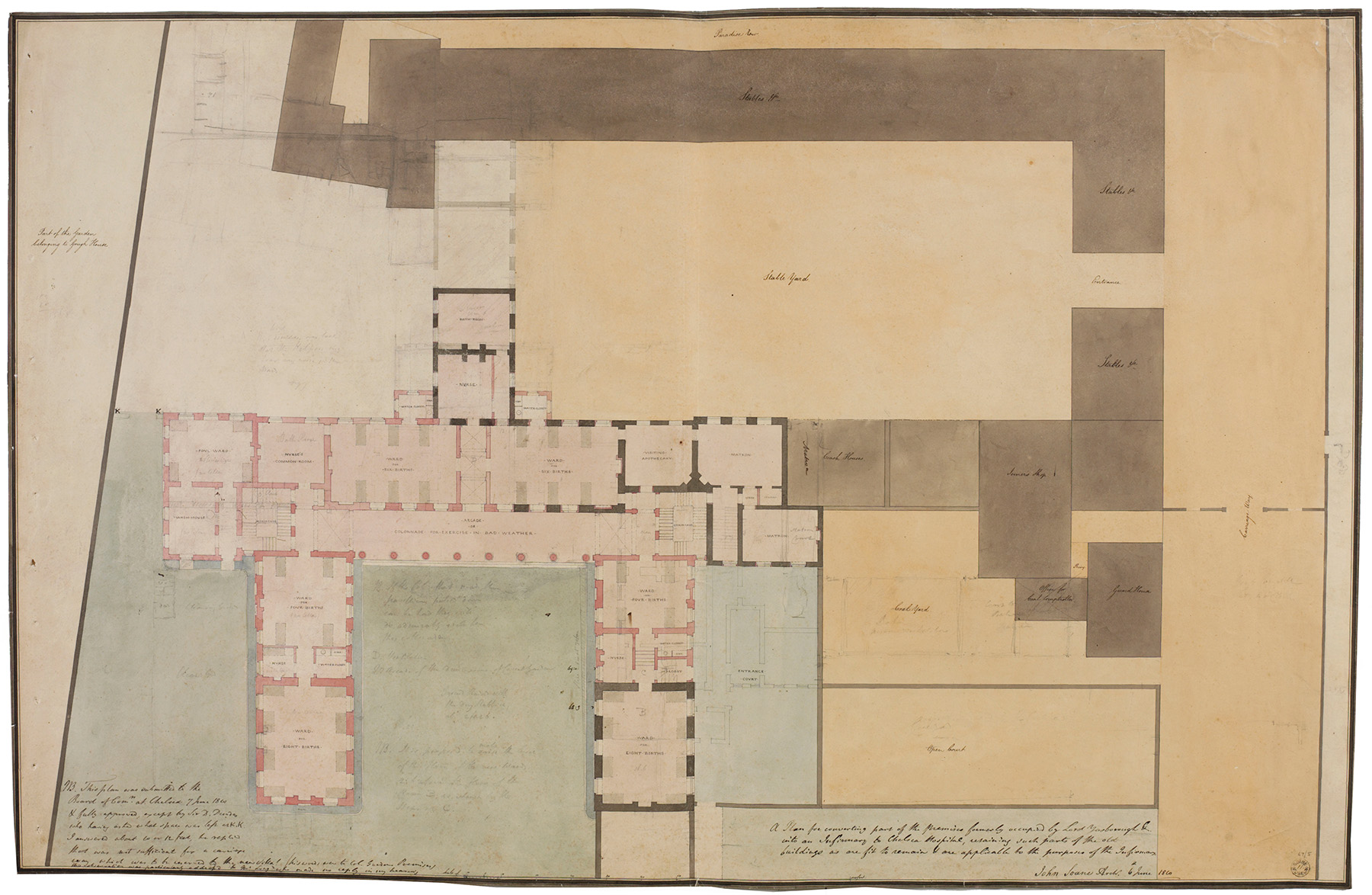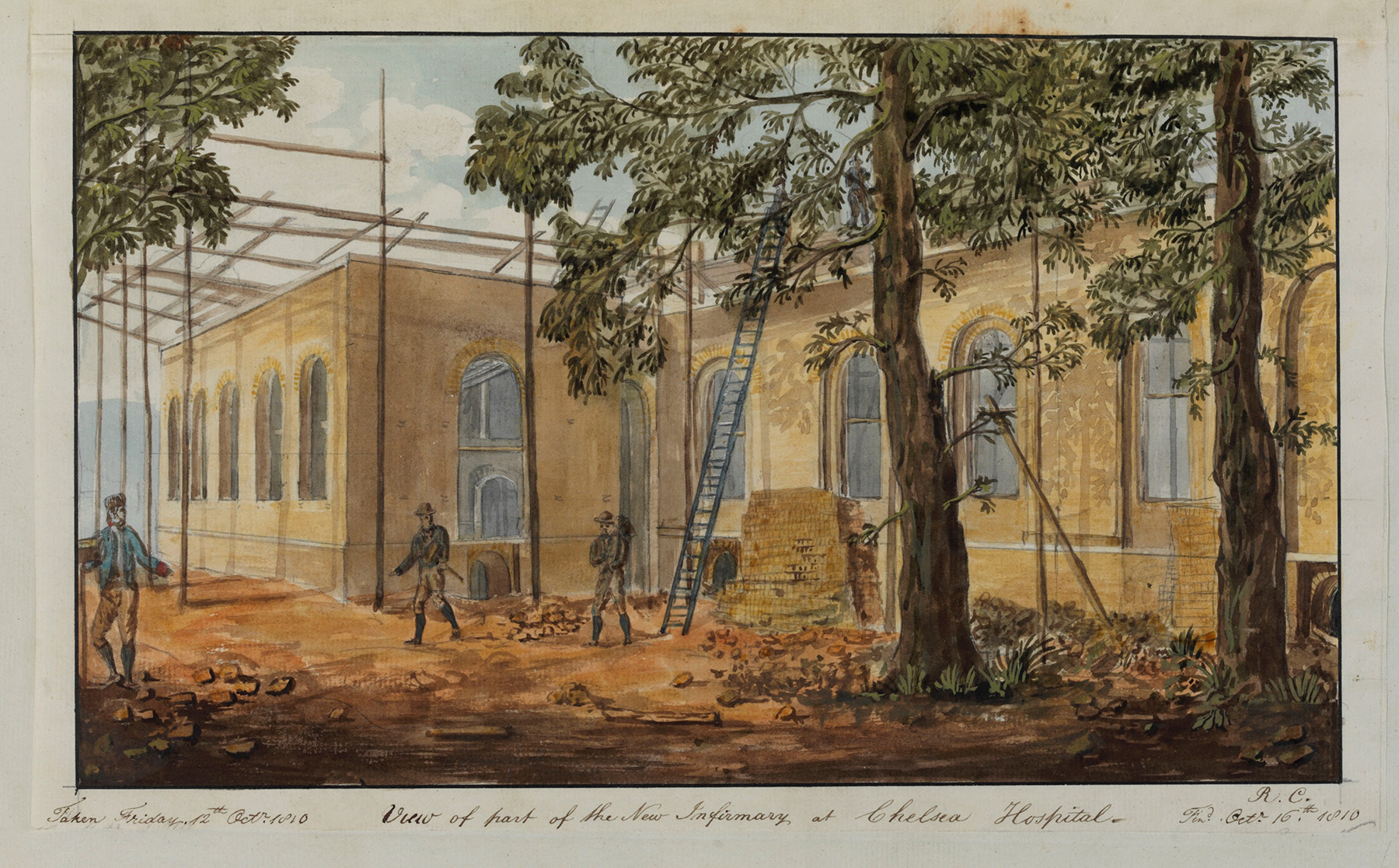Soane’s Infirmary and advances in hospital design
A new infirmary was Sir John Soane’s first major building project at the Hospital. The location designated by the Royal Hospital Commissioners was that of Walpole House, where Sir Robert Walpole, Britain's first Prime Minister, lived from 1722 to 1745, and where the National Army Museum stands today.

Lord Yarborough was the last least holder of Walpole House before the building was transferred back to the Royal Hospital in 1808.
Soane understood how crucial fresh, clean air was, as well as the importance of warmth and ventilation, cleanliness and the need to segregate infectious patients.
The crowded site of Walpole House did not meet Soane’s criteria: he believed the existing buildings surrounding the house would compromise the air quality. Soane’s plan (shown here) includes the ‘muddle’ of service buildings situated to the east of the Infirmary. It also indicates the parts of Walpole House considered for incorporation in the new Infirmary.
On completion of the Infirmary, Soane’s concerns were proved correct. It was clear that some of the neighbouring buildings, including Wren’s stables, had to be removed to improve the ventilation. Soane replaced Wren’s stables with a much smaller scale stable yard, built between 1814 and 1817.
